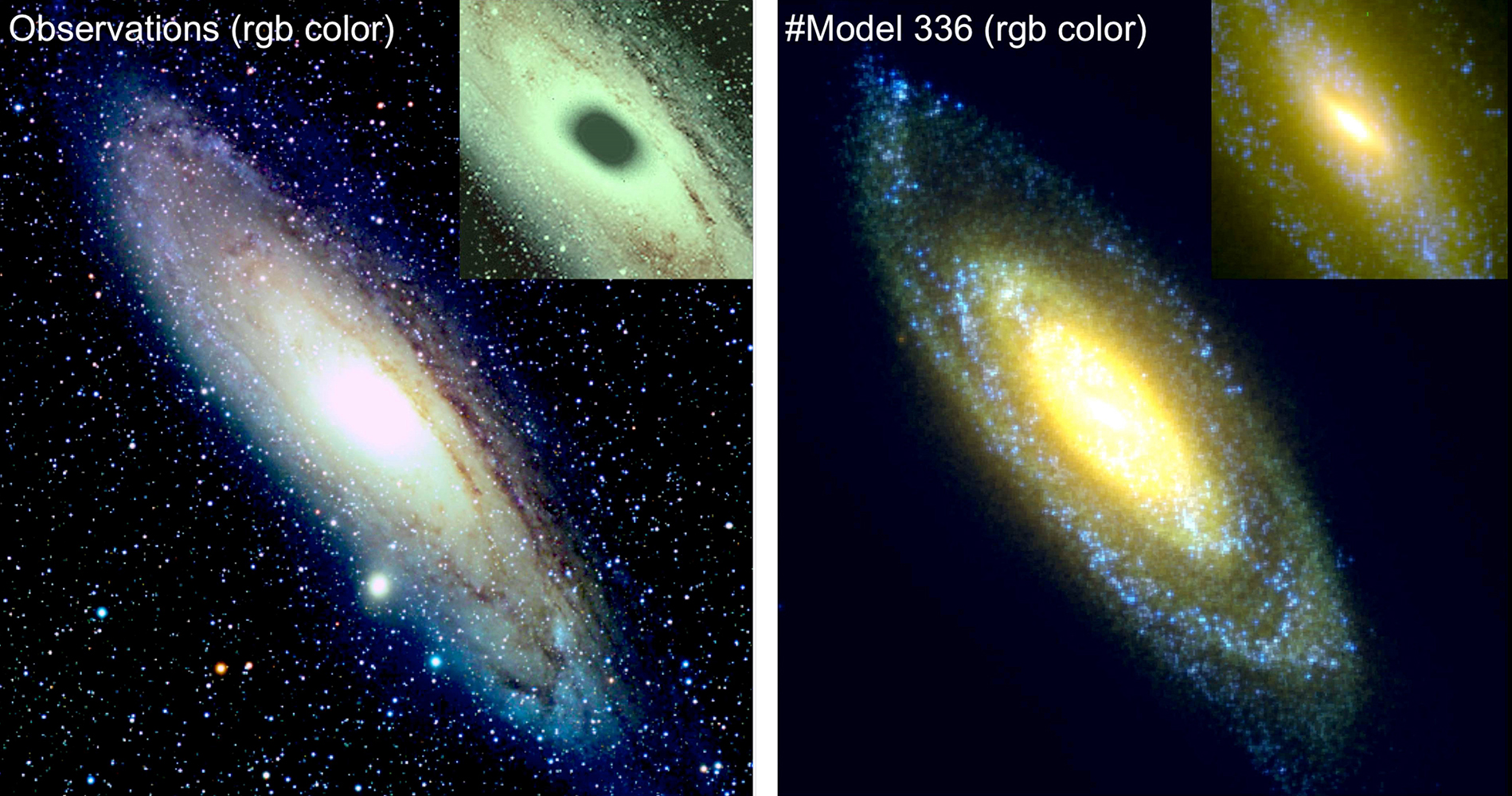
In 964, the Persian astronomer, Abd al-Rahman al-Sufi described for the first time the large nebula of Andromeda. Listed in 1923 as a galaxy, Andromeda has been often considered as the twin sister of our Milky Way. It is our closest neighbour and this allows the observers to scrutinize its properties, which intrigued the astrophysicists until today.
An observational campaign made between 2006 in 2014 by American astronomers, has underlined a considerable difference with the Milky Way. In the huge Andromeda disk, all stars older than 2 billion years undergo random motions, the scale of which being almost comparable to their rotation around the centre of this galaxy. In comparison, stars of the disk of the Milky Way, e.g., our Sun, are subject only to a simple rotation. How to explain this difference?
The study is based on numerical modelling made on the most powerful available computers in France - of the Paris Observatory ( MesoPSL) and GENCI (IDRIS - CNRS)-, with the processing of about one terabyte of data. The French-Chinese scientific team of the Paris Observatory - PSL, the National Astronomical Observatory of China (NAOC), the Astronomical Observatory of the University of Strasbourg, and the CNRS finally succeeded in characterizing the physical mechanisms of the Andromeda formation, so lifting the veil on its origin. The scientists demonstrated that the random stellar motions can be explained only by a "recent" collision, which was followed by an episode of star formation spread over all the huge Andromeda disk.
7 to 10 billion years ago, instead of Andromeda, there were two galaxies on an encountering orbit. The astronomers optimized by simulations the trajectories of both galaxies. They discovered that they had finally merged 1.8 to 3 billion years ago. This collision gave birth to Andromeda, as we know it. "We showed that the biggest of both parent galaxies was approximately four times as massive as the smallest ", specifies François Hammer, astronomer of the Paris Observatory - PSL, first co-author of the study.

Thanks to intensive numerical calculations, the astrophysicists succeed for the first time in reproducing in detail all the numerous structures that compose the Andromeda galaxy: the bulge, the bar and the huge disk. The latter includes a gigantic ring of young stars, which stability with time remained unexplained, which has then been solved.
The Andromeda galaxy is surrounded by its halo, a vast region 10 times larger than Andromeda, and populated by gas and stars. Very deep observations realized between 2008 and 2014 with the French-Canadian telescope in the Hawaiian Islands (CFHT) show that the halo of Andromeda is populated by gigantic currents of stars. The most prominent one is indeed called the " Giant Stream ". The huge disk is warped, and on its very edges there are shells and clumps.
The French-Chinese collaboration succeeded in reproducing and in understanding the origin of these structures, by making a systematic comparison with these deepest observations of the halo of Andromeda. The "Giant Stream" as well as the shells are made of stars belonging to the smallest parent galaxy, whereas diffuse clumps and the warp are coming from the largest one. It explains why the former structures are under-abundant in heavy elements when compared to the others: the smallest parent galaxy being less massive, it formed fewer heavy elements and stars than the largest one.

It is the very first time that a numerical simulation succeeds in reproducing a galaxy with so many details. The gigantic collision, which took place while our Earth already existed, could have left materials in our neighbourhood, the Local Group. It is the only way to explain how formed the bulge, the bar, the thin and thick disks, the stable ring of young stars in the disk, the recent event of star formation widespread over the whole disk, the 3D structure of the Giant Stream, the shells and diffuse clumps, and the distribution of stars in the halo.
Référence
This research study has led to an article entitled “A 2-3 billion year old major merger paradigm for the Andromeda galaxy and its outskirts”, by F. Hammer et al., to be published February the 14th, 2018, in Monthly Notices of the Royal Astronomical Society (arXiv: 1801.04279).
Collaboration
The team includes François Hammer (Observatoire de Paris – PSL), Yanbin Yang (Observatoire de Paris – PSL), Jianling Wang (National Astronomical Observatory of China), Rodrigo Ibata (Observatoire astronomique de l’Université de Strasbourg), Hector Flores (Observatoire de Paris – PSL) and Mathieu Puech (Observatoire de Paris – PSL).
Videos of the simulation:
